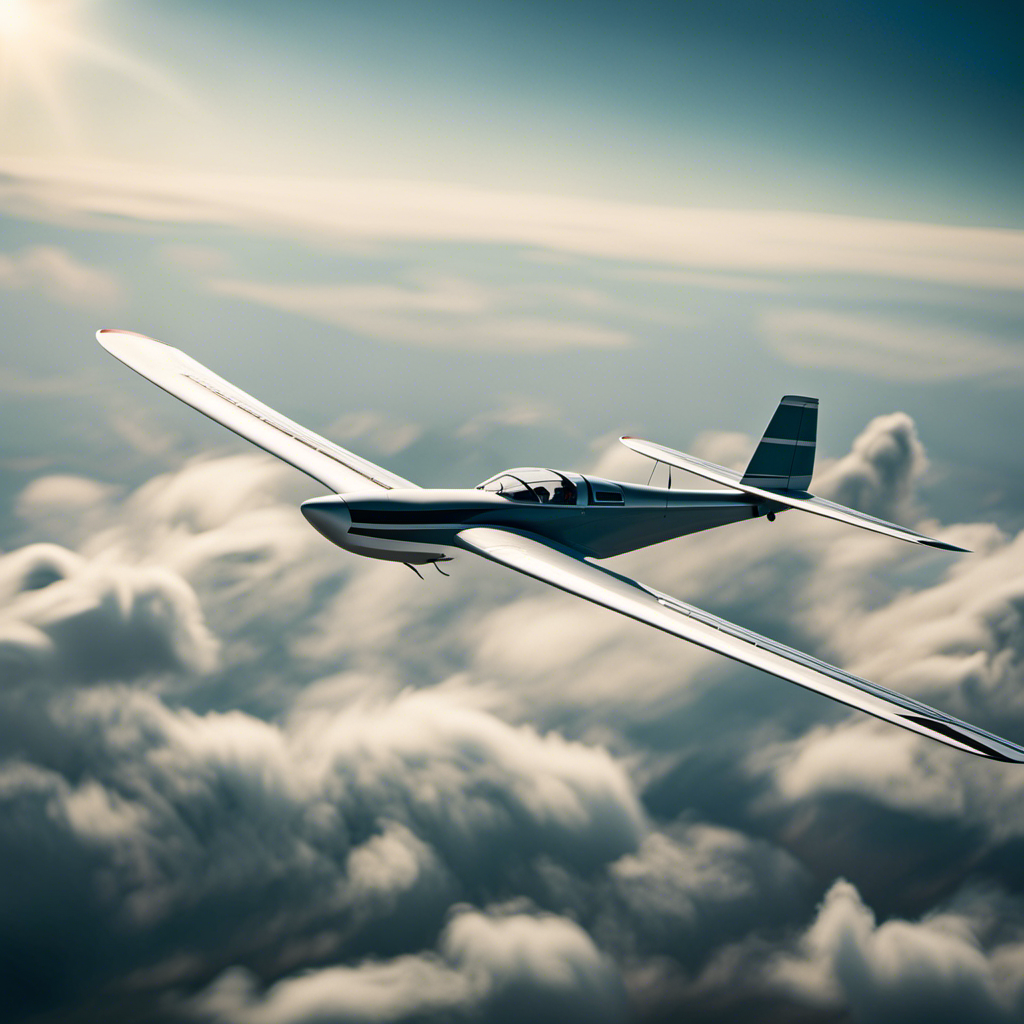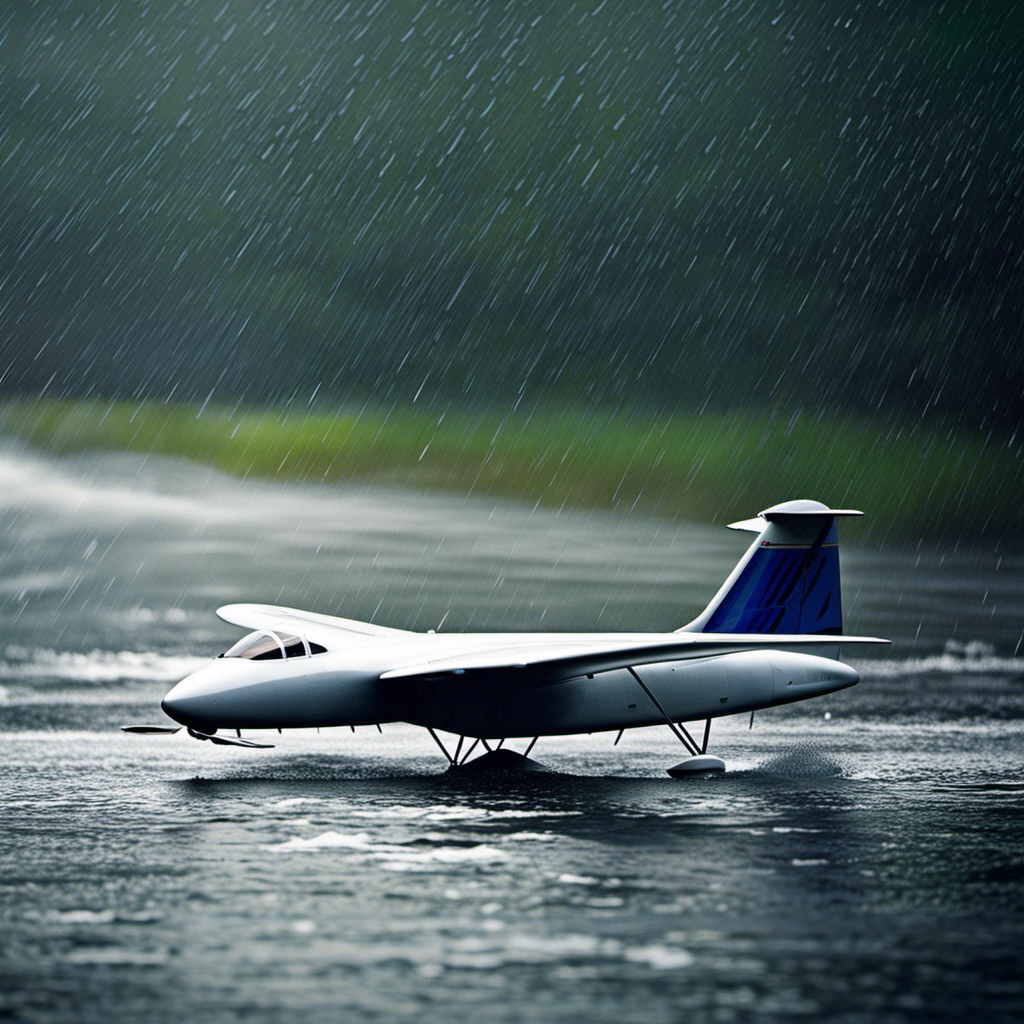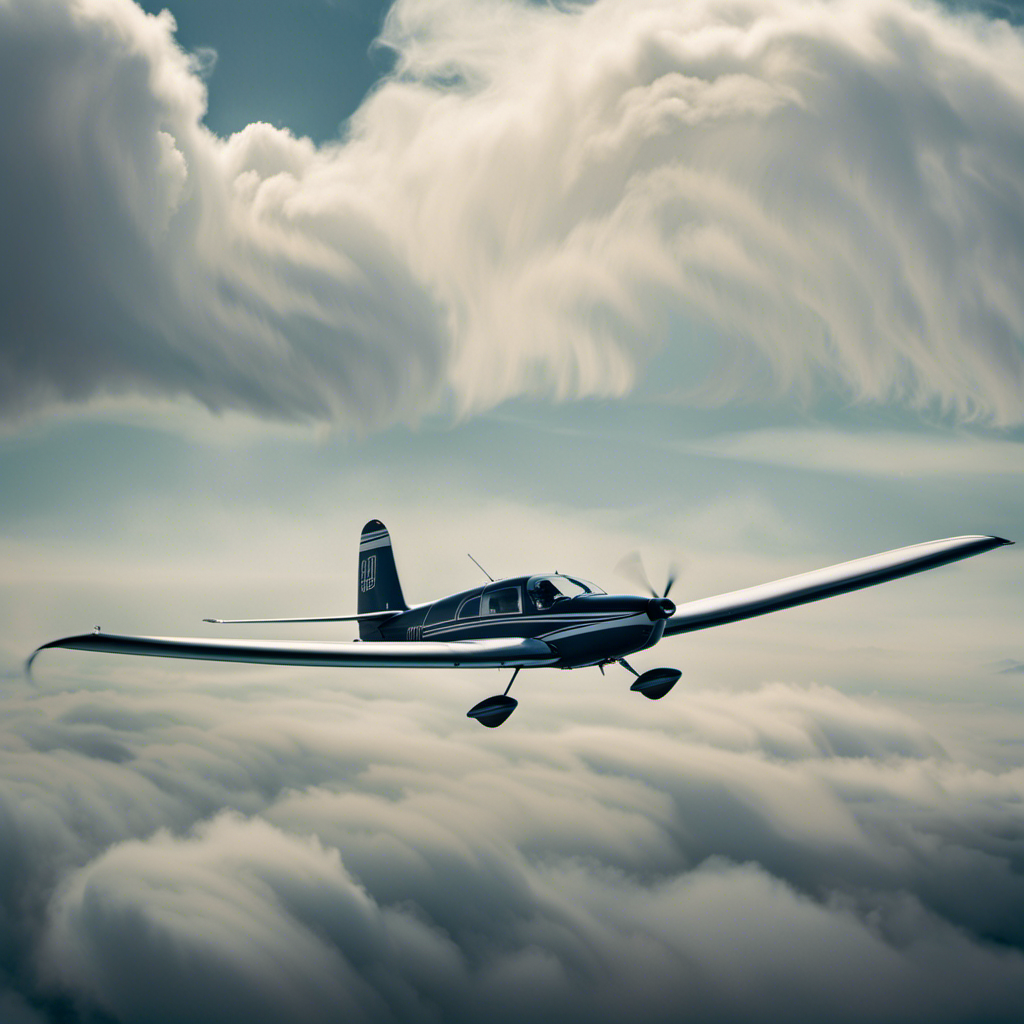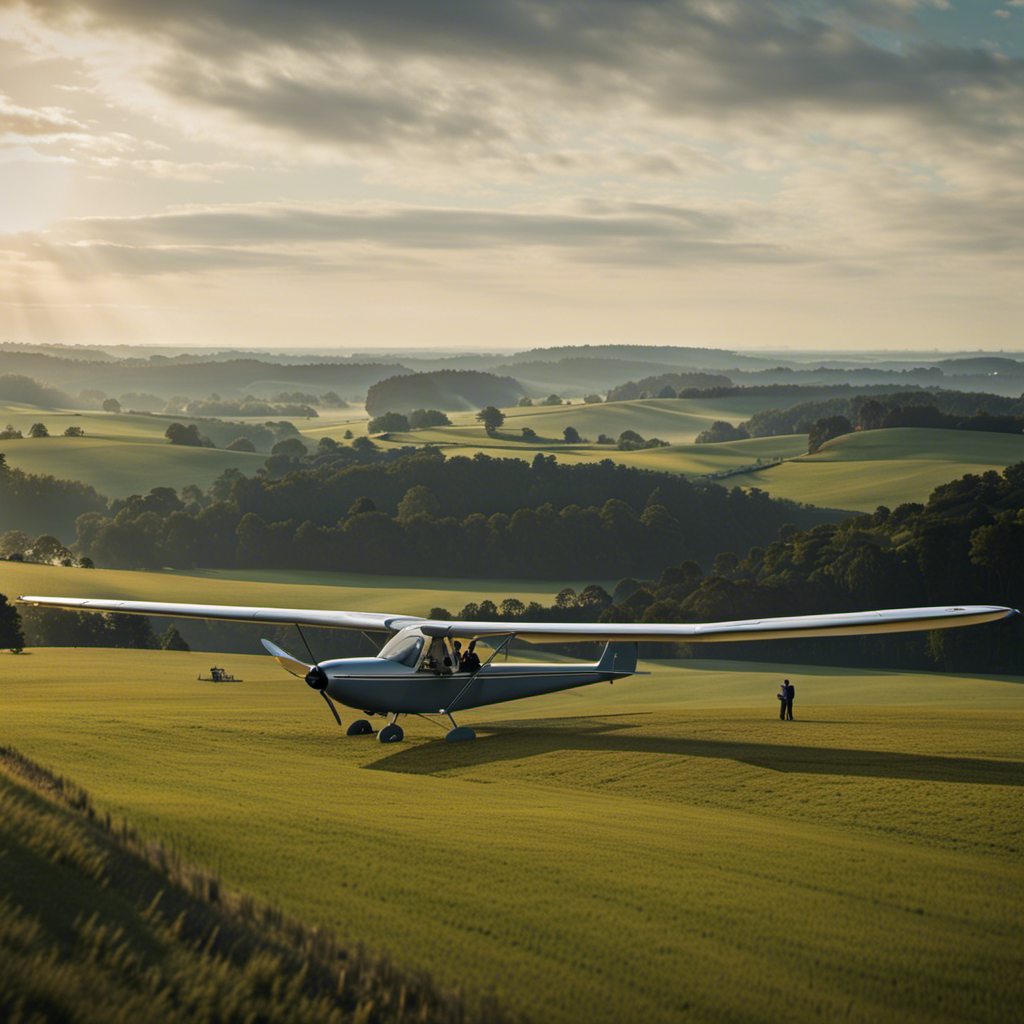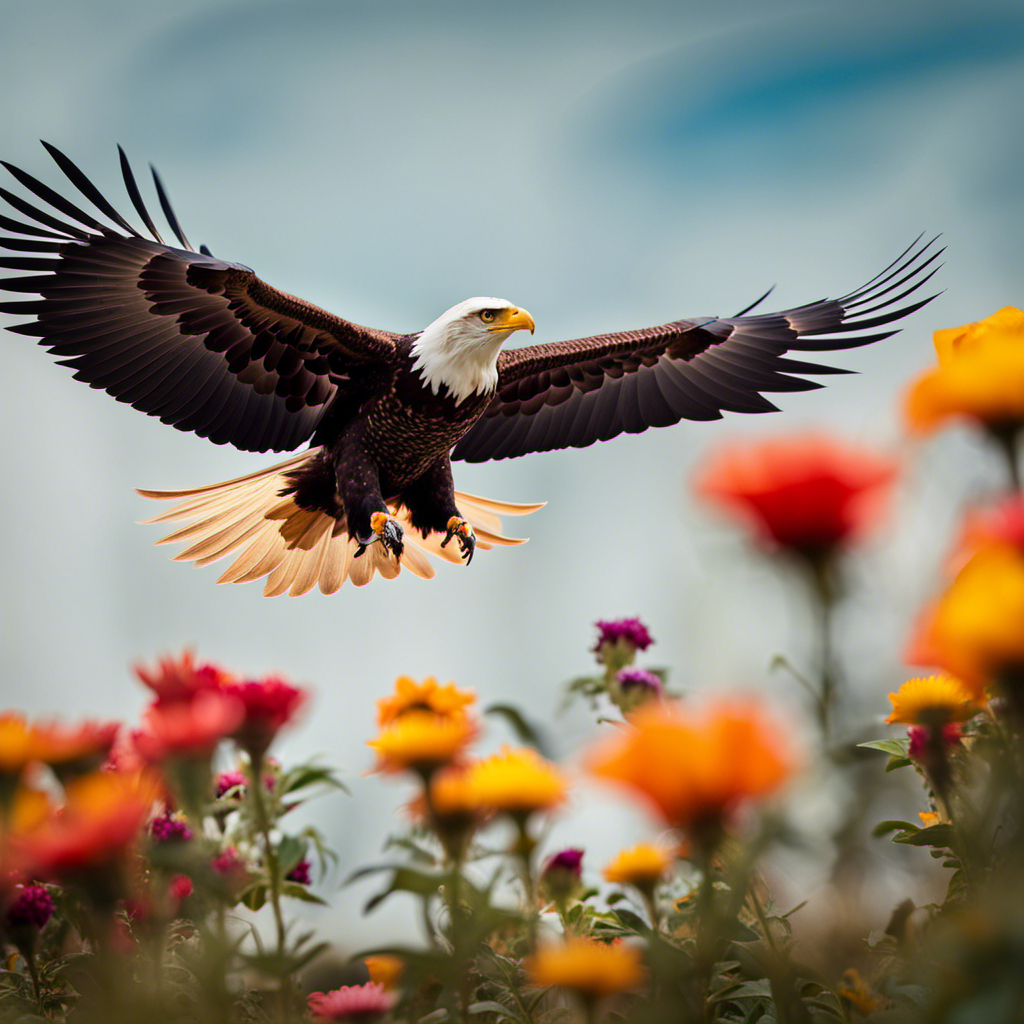Curious about what makes a sailplane glider revolutionary? It’s transformed how people soar through the sky. Discover the exciting world of gliding today!
With its advanced features and components, gliding with a sailplane glider offers advantages that traditional gliders can only dream of.
In this article, we will delve into the early origins, development, and impact of sailplane gliders on aviation.
So buckle up and get ready to explore the fascinating world of sailplane gliding.
Key Takeaways
- Introduction of the V-tail design
- Advancements in wing design
- Use of lightweight materials
- Long wingspan and high aspect ratio
Early Origins of Gliding
The early origins of gliding can be traced back to the experiments of Otto Lilienthal in the late 19th century. Lilienthal, a German aviation pioneer, made significant contributions to the field of aviation by conducting extensive research on the principles of flight.
His experiments involved the construction of various glider designs and countless test flights to understand the dynamics of flight. Lilienthal’s gliders were innovative for their time, featuring a lightweight framework covered with fabric and wing surfaces designed to generate lift.
The Development of the Sailplane Glider
In the development of the sailplane glider, several key advancements have played a crucial role.
Firstly, the introduction of the V-tail design has significantly improved the glider’s stability and maneuverability. This innovative tail configuration reduces drag and allows for better control during flight.
Additionally, advancements in wing design have contributed to the glider’s performance by increasing lift and reducing drag. These advancements include the use of airfoils with optimized shapes and the incorporation of winglets to minimize vortex formation.
Lastly, the use of lightweight materials such as carbon fiber composites has revolutionized sailplane construction, resulting in gliders that are not only strong but also highly efficient in terms of weight and fuel consumption.
These advancements have collectively transformed the sailplane glider into a sophisticated and efficient aircraft for gliding enthusiasts.
Introduction of the V-tail design
Introduced in the 1940s, the V-tail design revolutionized gliding by improving stability and control. This innovative design features two vertical stabilizers arranged in a V shape, replacing the traditional horizontal tailplane and vertical fin.
The V-tail design offers several advantages over conventional tail configurations. Firstly, it reduces drag, allowing the glider to achieve higher speeds and glide ratios. Additionally, the V-tail design enhances maneuverability by providing better pitch and yaw control, resulting in improved handling characteristics. By eliminating the need for a separate horizontal stabilizer, the V-tail design also reduces weight and drag.
This groundbreaking design has been widely adopted in sailplane gliders, contributing to their exceptional performance and maneuverability in the air.
With the V-tail design revolutionizing gliding, let’s now explore advancements in wing design, further enhancing the capabilities of sailplane gliders.
Advancements in wing design
With advancements in wing design, sailplane gliders have become even more aerodynamically efficient. The development of high aspect ratio wings, which have a longer span compared to their chord length, has significantly improved the glider’s performance. These wings create less drag and generate more lift, allowing the glider to stay aloft for longer periods and achieve higher speeds.
Another innovation in wing design is the incorporation of winglets, small vertical fins at the wingtips. Winglets reduce the formation of vortices, which are swirling air currents that create drag. By minimizing drag, winglets enhance the glider’s efficiency and increase its glide ratio.
Furthermore, the use of composite materials, such as carbon fiber and fiberglass, in wing construction has resulted in lighter and stronger wings. This transition into the subsequent section about the use of lightweight materials revolutionizes the overall glider design, enabling improved performance and maneuverability.
Use of lightweight materials
The incorporation of lightweight materials, such as carbon fiber and fiberglass, has drastically improved the performance and maneuverability of modern gliders. These materials have revolutionized the world of gliding by providing immense strength while keeping the weight to a minimum.
Carbon fiber, in particular, is known for its exceptional stiffness and strength-to-weight ratio. It is used in the construction of the glider’s wings, fuselage, and other components. Fiberglass, on the other hand, offers excellent durability and flexibility. By using these materials, glider designers have been able to create wings with high aspect ratios, resulting in increased lift and reduced drag. This, in turn, allows for longer and more efficient flights.
The use of lightweight materials has truly transformed the gliding experience, enabling pilots to soar through the skies with greater ease and grace.
With the use of lightweight materials, modern sailplane gliders are equipped with a range of features and components that enhance their performance and safety. These include a streamlined fuselage, which reduces drag and improves glide ratio. The wings are designed with precision, featuring advanced airfoil shapes and winglets to minimize induced drag and improve lift distribution.
The cockpit is ergonomically designed for the pilot’s comfort and ease of operation, with state-of-the-art instruments and controls. The gliders are equipped with retractable landing gear for takeoff and landing, ensuring smooth ground operations. Safety features such as parachutes and emergency locator transmitters are also incorporated for added security.
The combination of lightweight materials and advanced features makes sailplane gliders a remarkable feat of engineering, enabling pilots to achieve remarkable flights and push the boundaries of gliding.
Features and Components of a Sailplane Glider
When it comes to sailplane gliders, there are several key features and components that contribute to their efficient and safe operation.
One notable feature is their long wingspan and high aspect ratio, which allows for increased lift and improved gliding performance.
The cockpit and controls are also crucial, as they provide the pilot with the necessary tools to maneuver the glider effectively.
Long wingspan and high aspect ratio
To fully appreciate the sailplane glider’s long wingspan and high aspect ratio, you’ll notice a significant increase in lift efficiency and improved soaring capabilities. The long wingspan allows for a larger wing area, which generates more lift. This increased lift efficiency means that the sailplane glider can stay airborne for longer periods of time, even without the use of an engine.
The high aspect ratio, which is the ratio of the wingspan to the average chord length, further enhances the glider’s performance. A high aspect ratio reduces drag, allowing the sailplane glider to fly at higher speeds while maintaining stability. The combination of the long wingspan and high aspect ratio makes the sailplane glider a remarkable aircraft that can effortlessly glide through the air.
Moving on to the cockpit and controls…
Cockpit and controls
Pilots in a sailplane glider can easily control their altitude and direction using the intuitive and responsive cockpit controls.
The cockpit of a sailplane glider is designed to provide maximum comfort and functionality for the pilot. The primary controls include the control stick, rudder pedals, and instrument panel.
The control stick allows the pilot to control the pitch and roll of the glider, while the rudder pedals control the yaw. The instrument panel is equipped with various gauges and indicators, providing the pilot with important information such as airspeed, altitude, and rate of climb or descent.
These controls are designed to be easily accessible and responsive, allowing the pilot to make precise adjustments in flight. With such precise control, pilots can navigate through thermals and other air currents with ease.
Transitioning into the subsequent section about safety features and emergency systems, these responsive controls also play a crucial role in ensuring the safety of the pilot and the glider.
Safety features and emergency systems
For your safety, it’s important to familiarize yourself with the various safety features and emergency systems in place in a sailplane glider. The first and most crucial safety feature is the parachute. A sailplane glider is equipped with a parachute that can be deployed in case of an emergency or a failed launch. This parachute helps to ensure a controlled descent and a safe landing.
Additionally, sailplane gliders are equipped with a comprehensive instrumentation system that includes an altimeter, airspeed indicator, variometer, and more. These instruments provide valuable information to the pilot regarding altitude, airspeed, and vertical speed, allowing for better decision-making during flight.
Being aware of these safety features and emergency systems is essential to ensure a safe and enjoyable gliding experience.
Transitioning into the next section about the advantages of gliding with a sailplane glider, let’s explore the incredible aerodynamic performance that sets them apart from other gliders.
Advantages of Gliding with a Sailplane Glider
The advantages of gliding with a sailplane glider are numerous and include increased efficiency and longer flight durations. Sailplane gliders are designed to take advantage of the natural forces in the atmosphere, enabling pilots to soar through the sky with minimal reliance on external power sources. This not only reduces fuel consumption and environmental impact but also allows for extended flight times. The table below highlights some key advantages of using a sailplane glider:
| Advantages of Sailplane Gliders |
|---|
| 1. Increased Efficiency |
| 2. Longer Flight Durations |
| 3. Cost-Effective |
| 4. Access to Remote Locations |
With their ability to harness the energy present in the atmosphere, sailplane gliders offer a highly efficient means of flying. They can stay airborne for hours, even without an engine, by utilizing rising air currents and thermals. This increased efficiency translates into longer flight durations, allowing pilots to explore vast distances and experience the joys of silent, extended flight. As we delve into the world of competitive gliding and records, we will uncover the remarkable achievements made possible by sailplane gliders.
Competitive Gliding and Records
Competitive gliding has seen remarkable achievements and records broken, thanks to the incredible capabilities of sailplane gliders. These soaring machines have pushed the boundaries of human flight, captivating pilots and spectators alike.
Here are four awe-inspiring feats that highlight the prowess of sailplane gliders:
-
Altitude: Sailplane gliders have reached astounding heights, with the highest recorded altitude being an astonishing 76,124 feet. Imagine soaring through the sky, touching the edge of the Earth’s atmosphere.
-
Distance: Gliders have covered vast distances, with the longest recorded flight reaching an incredible 1,726 miles. Picture the exhilaration of embarking on a journey that spans multiple states or even countries.
-
Speed: Sailplane gliders have achieved remarkable speeds, with the fastest recorded flight reaching an astonishing 198 mph. Experience the thrill of slicing through the air at incredible velocities.
-
Duration: Gliders have demonstrated remarkable endurance, with the longest recorded flight lasting an astounding 56 hours and 15 minutes. Envision the sense of freedom and tranquility that comes from spending days suspended in the sky.
These breathtaking accomplishments serve as a testament to the extraordinary capabilities of sailplane gliders, paving the way for further advancements in gliding technology.
As we delve into the world of popular sailplane glider models, let’s explore the innovative designs and features that have revolutionized the sport of gliding.
Popular Sailplane Glider Models
When it comes to popular sailplane glider models, there are three key points that deserve your attention: the ASG 29, Discus 2, and DG-1000.
The ASG 29 is a high-performance glider known for its exceptional climbing ability and agility in thermals.
The Discus 2, on the other hand, is renowned for its versatility and ease of use, making it a favorite among both experienced pilots and beginners.
Lastly, the DG-1000 stands out as a unique model with its ability to accommodate two occupants, making it perfect for training flights or leisurely soaring adventures with a friend.
ASG 29
ASG 29 is a popular sailplane glider model among gliding enthusiasts. It is known for its exceptional performance and advanced features that make it a top choice in the gliding community. Here are three reasons why the ASG 29 stands out:
-
Efficient Design: The ASG 29 incorporates state-of-the-art aerodynamics, featuring a high aspect ratio wing and a streamlined fuselage. These design elements minimize drag and enhance the glider’s efficiency, allowing for longer and more enjoyable flights.
-
Advanced Cockpit: The ASG 29 boasts a modern cockpit with an ergonomic layout and advanced instrumentation. Pilots can easily access vital flight information, such as airspeed, altitude, and navigation data, enhancing safety and situational awareness.
-
Outstanding Soaring Performance: Thanks to its efficient design and advanced wing profile, the ASG 29 excels in soaring conditions. It is capable of climbing in thermals, ridge lift, and even wave lift, enabling pilots to explore new horizons and reach new heights.
With the ASG 29’s impressive capabilities, it is no wonder that it has become a favorite among gliding enthusiasts.
Now, let’s take a closer look at another popular sailplane glider model, the ‘discus 2’.
Discus 2
If you’re looking for a high-performance option, the Discus 2 is a popular choice among enthusiasts. This sailplane glider, manufactured by Schempp-Hirth, has set new standards in the world of gliding. With its sleek design and advanced features, the Discus 2 offers exceptional performance and handling.
Its wing, made of carbon fiber, ensures excellent aerodynamics and stability. The glider is equipped with water ballast tanks, allowing pilots to adjust the weight distribution according to the weather conditions. The cockpit is ergonomically designed for comfort and ease of use. The Discus 2 also features a retractable landing gear, making takeoffs and landings smoother.
This glider has become a favorite among pilots who seek both performance and convenience. With its impressive capabilities, the Discus 2 has truly revolutionized the sport of gliding.
Transitioning to the next section, the DG-1000 is another notable sailplane glider that has gained popularity in recent years.
DG-1000
The DG-1000, manufactured by DG Flugzeugbau, has become increasingly popular among pilots in recent years due to its versatile design and impressive performance capabilities. This state-of-the-art sailplane glider offers a range of features that will leave you in awe:
-
Sleek and aerodynamic design: The DG-1000’s streamlined shape allows for efficient gliding and reduced drag, maximizing your flying experience.
-
Dual cockpit: With two seats side by side, you can share the joy of soaring through the skies with a friend or instructor.
-
Powerful engine: Equipped with a retractable engine, the DG-1000 provides the option for self-launching, offering greater flexibility and independence.
-
Advanced avionics: The glider is equipped with modern avionic systems, including GPS navigation and a variety of instruments to enhance safety and precision.
-
Exceptional performance: The DG-1000 boasts excellent climbing ability, high cruising speeds, and superb handling, making it a top choice for both recreational and competitive gliding.
As you explore the world of sailplane gliding, understanding the training and licensing requirements for pilots is essential.
Training and Licensing for Sailplane Glider Pilots
Learning to fly a sailplane glider requires obtaining the necessary training and licensing. To begin your journey, you must first find a reputable flight school or club that offers sailplane glider training.
The training typically consists of ground instruction and flight lessons, where you will learn about aerodynamics, meteorology, navigation, and emergency procedures specific to gliding.
After completing the required training hours and passing the written and practical exams, you can apply for a sailplane glider pilot license. This license allows you to fly solo and participate in gliding competitions.
Obtaining the necessary training and licensing is crucial as it ensures you have the skills and knowledge to safely operate a sailplane glider. It sets the foundation for exploring the endless possibilities and challenges that await you in the world of gliding.
The Impact of Sailplane Gliders on Aviation
Aviation has been significantly transformed by the impact of sailplane gliders. These remarkable aircraft have revolutionized the world of gliding, offering pilots a unique and exhilarating flying experience.
Here are five ways in which sailplane gliders have made their mark on aviation:
-
Increased Efficiency: Sailplane gliders are designed to maximize aerodynamic efficiency, allowing them to soar through the air with minimal energy consumption.
-
Extended Flight Times: With their ability to harness thermals and other updrafts, sailplane gliders can stay aloft for hours on end, offering extended flight times compared to traditional powered aircraft.
-
Silent Flight: Unlike powered planes, sailplane gliders glide silently through the air, providing a serene and peaceful flying experience.
-
Enhanced Safety: Sailplane gliders are equipped with advanced safety features, including ballistic parachute systems and strong airframes, ensuring the utmost safety for pilots.
-
Environmental Friendliness: As sailplane gliders rely solely on natural air currents for propulsion, they have a minimal environmental impact, making them a sustainable choice for aviation enthusiasts.
With their transformative impact on aviation, sailplane gliders have paved the way for the establishment of thriving gliding clubs and communities worldwide. These organizations provide a supportive and passionate environment for glider pilots to come together, exchange knowledge, and further advance the world of gliding.
Gliding Clubs and Communities
Joining a gliding club allows you to immerse yourself in a supportive community of passionate pilots, where you can exchange knowledge and foster your love for soaring through the air. These clubs provide a space for individuals with a shared interest in sailplane gliding to come together, learn from one another, and participate in various activities.
As a member, you have access to experienced instructors who can guide you through the intricacies of gliding techniques and safety protocols. The camaraderie among club members is invaluable, as you can engage in discussions about weather patterns, flight planning, and the latest advancements in glider technology.
Not only do gliding clubs offer a platform for personal growth and skill development, but they also serve as a hub for organizing competitions, events, and social gatherings. By being part of this vibrant community, you can continuously enhance your gliding expertise while forging lifelong friendships.
Looking ahead, the future of sailplane gliding holds exciting possibilities, with advancements in materials, aerodynamics, and electric propulsion systems promising increased efficiency and performance. These innovations will undoubtedly shape the next chapter in the history of gliding, propelling us further into the exhilarating world of silent flight.
The Future of Sailplane Gliding
With advancements in materials and technology, the future of sailplane gliding is poised to deliver even greater efficiency and performance. Here are four key developments that are shaping the future of sailplane gliding:
-
Improved aerodynamics: Engineers are constantly refining the design of sailplanes to minimize drag and optimize lift. Innovations such as laminar flow wings and advanced airfoil shapes are increasing glide ratios and allowing pilots to stay aloft for longer periods.
-
Lightweight materials: The use of composite materials like carbon fiber and Kevlar is making sailplanes lighter and stronger. This not only enhances their performance but also improves safety by increasing structural integrity.
-
Electric propulsion: Electric motors are being integrated into sailplanes, providing a supplementary power source for takeoff and climb. This eliminates the need for a tow plane or winch launch, making sailplane gliding more accessible and environmentally friendly.
-
Enhanced instrumentation: Advanced avionics systems and data analysis tools are giving pilots access to real-time information about weather conditions, airspace, and navigation. This enables more efficient flight planning and better decision-making in the air.
As these developments continue to evolve, the future of sailplane gliding holds exciting possibilities for both competitive pilots and recreational enthusiasts. The combination of improved aerodynamics, lightweight materials, electric propulsion, and enhanced instrumentation will undoubtedly elevate the efficiency and performance of sailplanes to new heights.
Conclusion
Congratulations! You’ve reached the end of this fascinating journey into the world of sailplane gliders. Who would have thought that such a seemingly simple aircraft could revolutionize the art of gliding?
From its early origins to the development of advanced features and components, sailplane gliders have truly transformed the way we soar through the skies. With their numerous advantages, they have taken competitive gliding to new heights and inspired a thriving community of pilots.
So, strap yourself in and get ready for the future of sailplane gliding, where the sky is no longer the limit!
